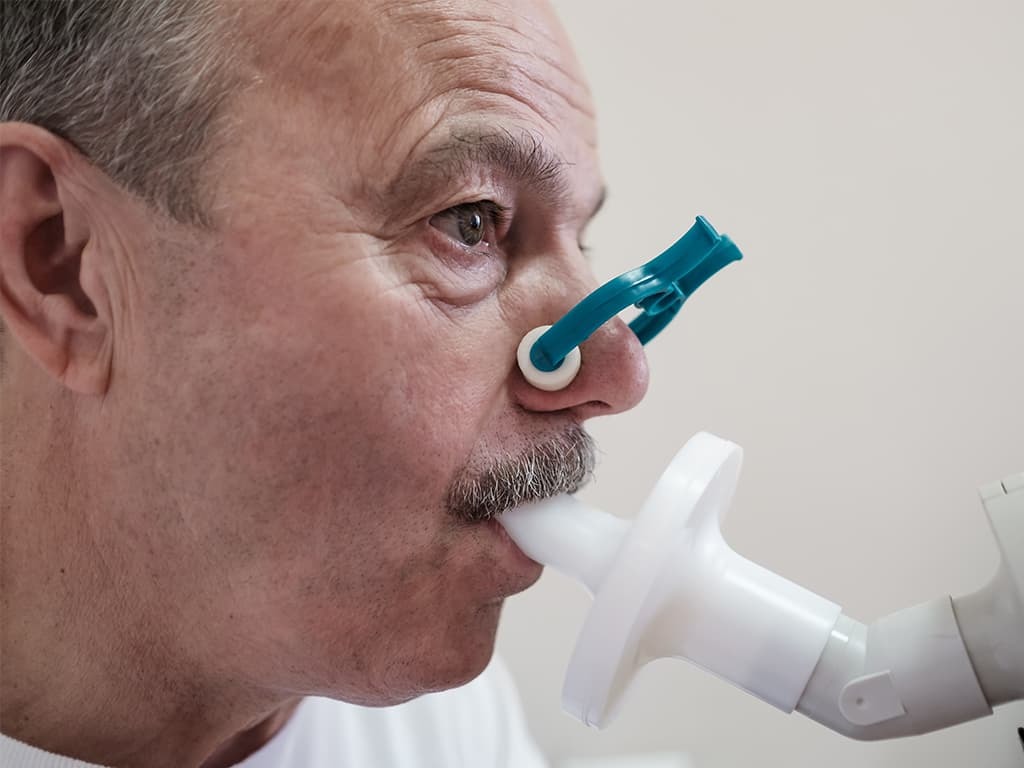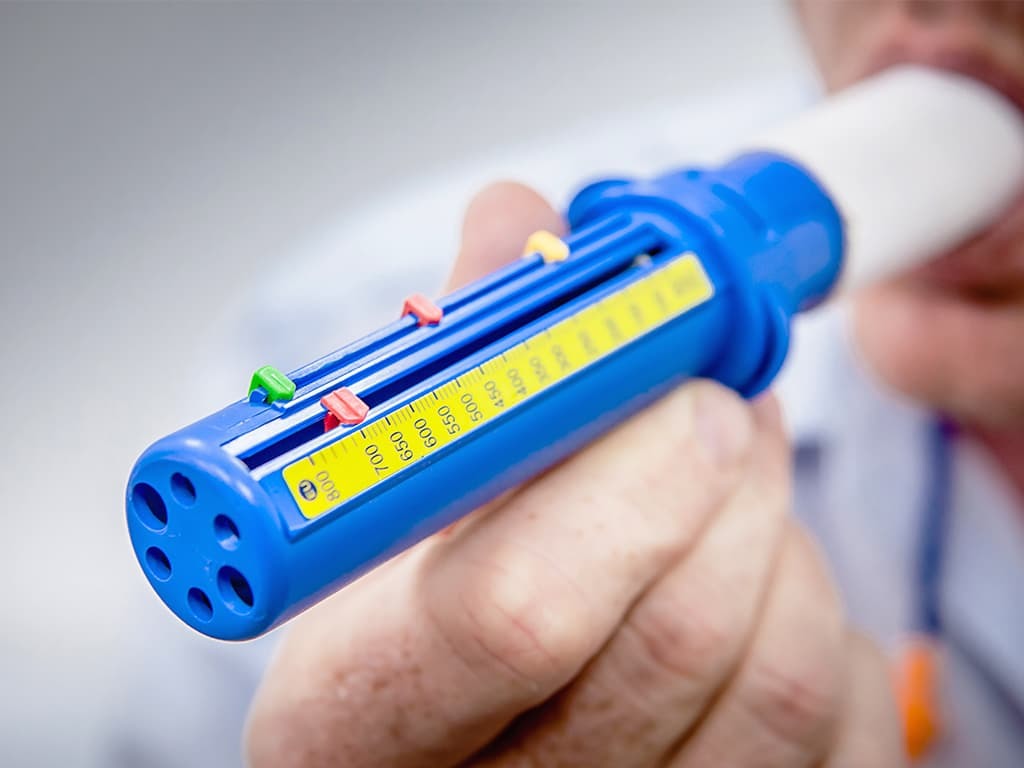- You are here:
- Home »
- Blog »
- Understanding ALS »
- ALS Lung Function Tests

ALS Lung Function Tests
ALS can negatively affect the body in a variety of different ways. Whilst symptoms may vary in intensity from individual to individual, physical issues such as muscle weakness will begin impact on day to day living at some point.
As the disease progresses, problems such as not being able to chew or swallow food can present significant challenges for the patient. Another serious issue associated with the later stages of ALS relates to respiration. The ability to breathe without assistance will become increasingly difficult as the nerves and muscles that control this process begin to atrophy and die.
In fact, respiratory failure is the most common cause of death amongst ALS patients. That’s why it’s important to carry out regular lung function tests to evaluate those with the disease and ensure that support is provided once difficulties begin.
An ALS patient’s lung function is normally monitored using a range of devices such as a spirometer or respiratory pressure meter. Observable symptoms such as tiredness and breathlessness may also be signs that lung function is beginning to deteriorate.
Here we take a look at the three main ALS lung function tests that are commonly employed and how they are used to assess respiratory function.
Lung Function Tests
Preparing for respiratory issues that may arise following an ALS diagnosis is an important stage in the overall management of the disease. It gives caregivers and physicians the opportunity to introduce solutions that ensure the individual is able to manage certain issues as effectively as possible.
In the early stages of the disease, approaches may involve using exercise as a way to improve lung function. In the later stages, it often means switching to a mechanical assistive device that maintains breathing safely.
Testing lung function usually involves the following types of devices:
Spirometer
A spirometer is a device that is able to measure the amount of air that is exhaled or inhaled and is a vital way to assess lung capacity. Measurements provide a comparison between slow vital capacity (SVC) and forced vital capacity (FVC).
The first of these measures the normal slow breathing in and exhaling out of the individual. The FVC, however, measures the amount of air expelled in the first second be forcing breath from lungs. This is a more important measurement for those with ALS as it demonstrates the strength of the lungs and how much control an individual has over their breathing.
Other measurements that can be used include the maximum mid-flow expiratory flow rate and peak cough flow. The latter involves coughing once the lungs have been emptied. Combined, all these measurements give a good indication of the condition of someone’s lung function and, monitored over time, how fast it may be degrading.
Respiratory Pressure Meter
A respiratory pressure meter is a handheld device that has a mouthpiece fitted to it. It is designed to measure respiratory strength.
The patient will exhale and then inhale as strongly as possible to determine their maximum inspiratory pressure (MIP). They can do the opposite to get a measure of their maximum expiratory pressure (MEP).
This can also be measured using a nasal device, blocking one nostril whilst breathing in and out of the other.
Peak Flow Meter

A peak flow meter is a more simple device which involves the patient blowing as hard as they can into a tube with a graded scale built into it. It’s often used to test people with asthma but it is also a good indication of lung capacity and strength and widely available over the counter.
Interpreting Lung Function Test Results
When it comes to interpreting lung function tests in ALS patients, setting a baseline is important. For those who have been newly diagnosed, this could mean using an average that has been calculated for their age, gender and fitness level. In a typical adult, the forced vital capacity or FVC, for instance, should be in a range of 80 to 100% of the mean.
Further lung function tests may well be based on previous results for the individual. Spirometry tests are usually carried out each time the patient visits their ALS clinic or physician, allowing for their lung function to be regularly monitored and any unusual changes to be quickly noticed.
If levels fall below what may be expected, further investigation is warranted. The patient might be feeling more tired, have trouble sleeping at night or be easily out of breath, all of which can be a sign that lung function is beginning to deteriorate.
Restricted lung function can be difficult to deal with. Opening up the airways with aerosol medications, as you would for an asthma patient, won’t work.
Exercise and trying to maximize lung capacity can make a difference in the initial stages. Often, management involves being aware of limitations and not exceeding them.
